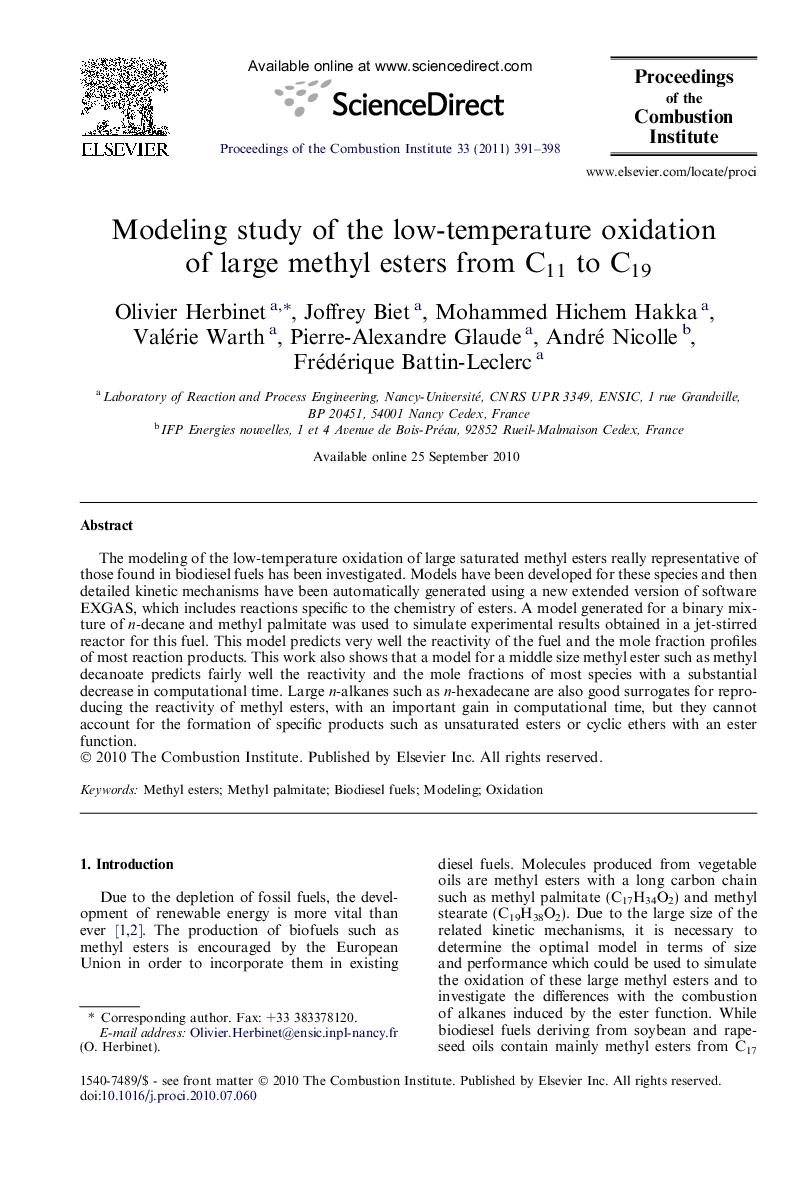| Article ID | Journal | Published Year | Pages | File Type |
|---|---|---|---|---|
| 241343 | Proceedings of the Combustion Institute | 2011 | 8 Pages |
The modeling of the low-temperature oxidation of large saturated methyl esters really representative of those found in biodiesel fuels has been investigated. Models have been developed for these species and then detailed kinetic mechanisms have been automatically generated using a new extended version of software EXGAS, which includes reactions specific to the chemistry of esters. A model generated for a binary mixture of n-decane and methyl palmitate was used to simulate experimental results obtained in a jet-stirred reactor for this fuel. This model predicts very well the reactivity of the fuel and the mole fraction profiles of most reaction products. This work also shows that a model for a middle size methyl ester such as methyl decanoate predicts fairly well the reactivity and the mole fractions of most species with a substantial decrease in computational time. Large n-alkanes such as n-hexadecane are also good surrogates for reproducing the reactivity of methyl esters, with an important gain in computational time, but they cannot account for the formation of specific products such as unsaturated esters or cyclic ethers with an ester function.
